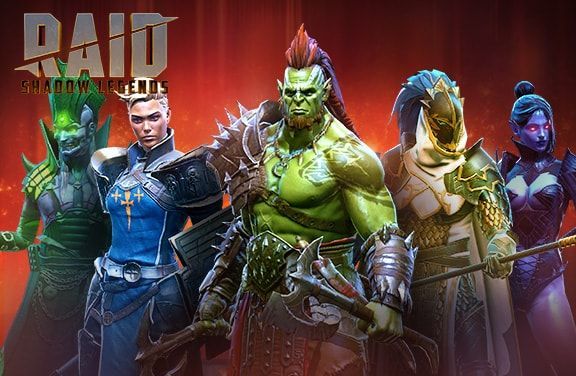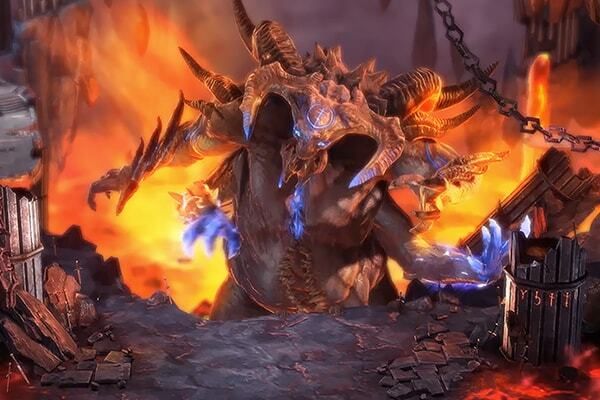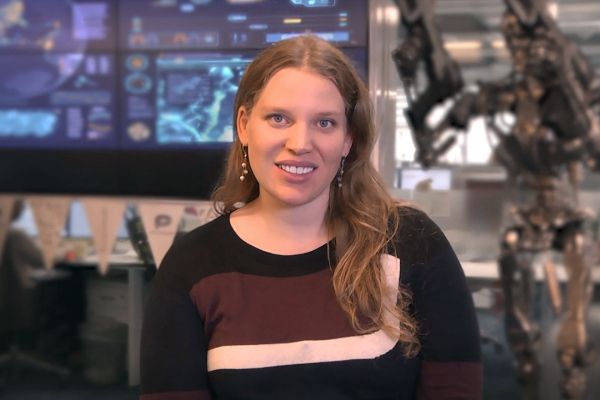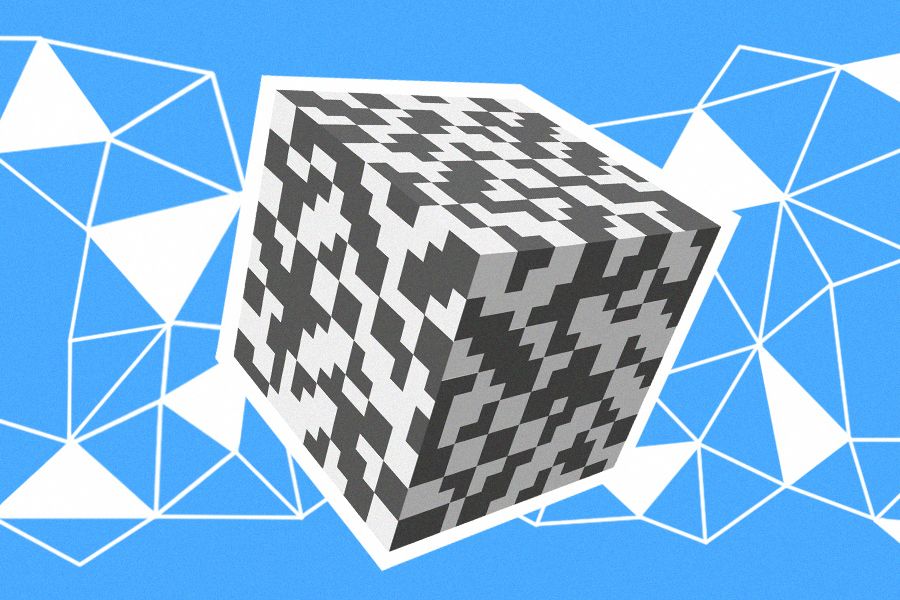Systemic Game Design of Clans in RAID: Shadow Legends: The Experience of the Plarium Team
This text is a translation of an article originally published on GameDev DOU.
My name is Daria Riaboshapka, and I’m a Game Design Team Lead at Plarium. In this article, I’ll talk about systemic game design using our team's experience creating clan features for RAID: Shadow Legends as an example. Our approach enabled the organic integration of new functionalities into all existing game systems. We also managed to reduce the time it takes to approve new features, develop a plan for their release, and make sure they are all interrelated and complement each other.
The article will be useful for game designers of all levels as well as stakeholders responsible for product development plans.
I joined Plarium in 2014 as a QA Engineer for our strategy games, and then became a Game Designer in 2017. Later, I switched to another project within the company and started working on RAID: Shadow Legends – a mobile MMORPG which is enjoyed by more than 98 million players worldwide.
How it all started: creating a Clan Shop
Shortly after I switched to RAID, our team was given the task of creating a Clan Shop where players could exchange clan currency for various useful items. At that time, the game already had a clan system: users could join clans to fight bosses together. However, we understood that the clans needed to be developed – and we wanted to do so.
Stakeholders outlined the following goals for this task:
- Solve the issue with the new Clan Boss’ rewards using Clan Coins (the Clan Shop currency)
- Ensure further development of clans
- Increase clan engagement
After team discussion, we also added the following goals for ourselves:
- We didn’t want to simply add a Clan Shop to suit a new Boss, so we decided to systematically approach the development of this feature and comprehensively work out a clan system that would function in the future
- Think out future clan features and their connection to the Clan Shop
- Prepare a clan development plan for several years ahead
A thorough approach to the task: why we believe that clans are important
According to the Plarium strategy games project’s internal statistics, 40% of the active player base had been playing our games for 8-10 years. This is specifically down to our strong and well-developed clan system. This functionality greatly contributes to socialization and the formation of strong bonds across clan members, and thus helps retain players. Players from all over the world attend offline clan meetings, their families become friends, and some users even name their children after each other!
As confirmation of this, here is Sensor Tower’s data for the fourth quarter of 2022 showing the percentage of top Android games by average monthly time spent. The combination of character collection and clan features increases player engagement.
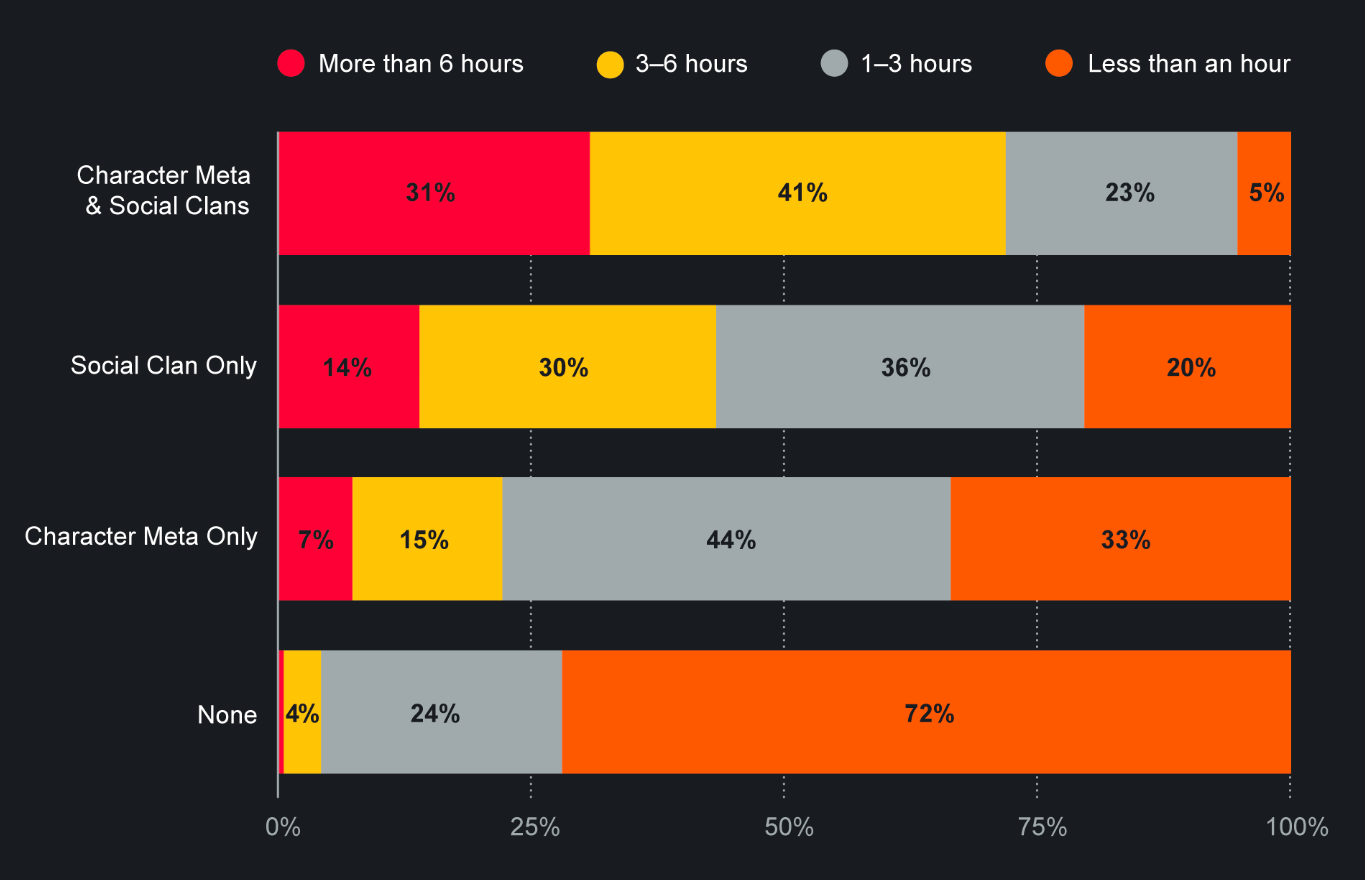
Percentage of top Android games by feature and average monthly time spent, Q4 2022
Over 70% of users spend more than 6 hours in games that have both developed clans and a character collection mechanic. Conversely, according to the data only 25% of players spend more than 6 hours in games that don’t have such features. So, players are most engaged in games that have a clan system and collectible characters.
Brainstorming and analysis: the ideal clan and its benefits for players
To begin with, we decided to find an answer to the question “why does a player need a clan?”. This would help us better understand how to develop clans. I want to point out right away that there is no correct answer because a lot depends on the game genre, the players’ ages, and the audience in general.
So, we:
- Analyzed competitors’ content
- Made a list of features that would be of interest to different types of players
- Brainstormed a lot
- Visualized all the gathered information
This is what the resulting visualization looked like:
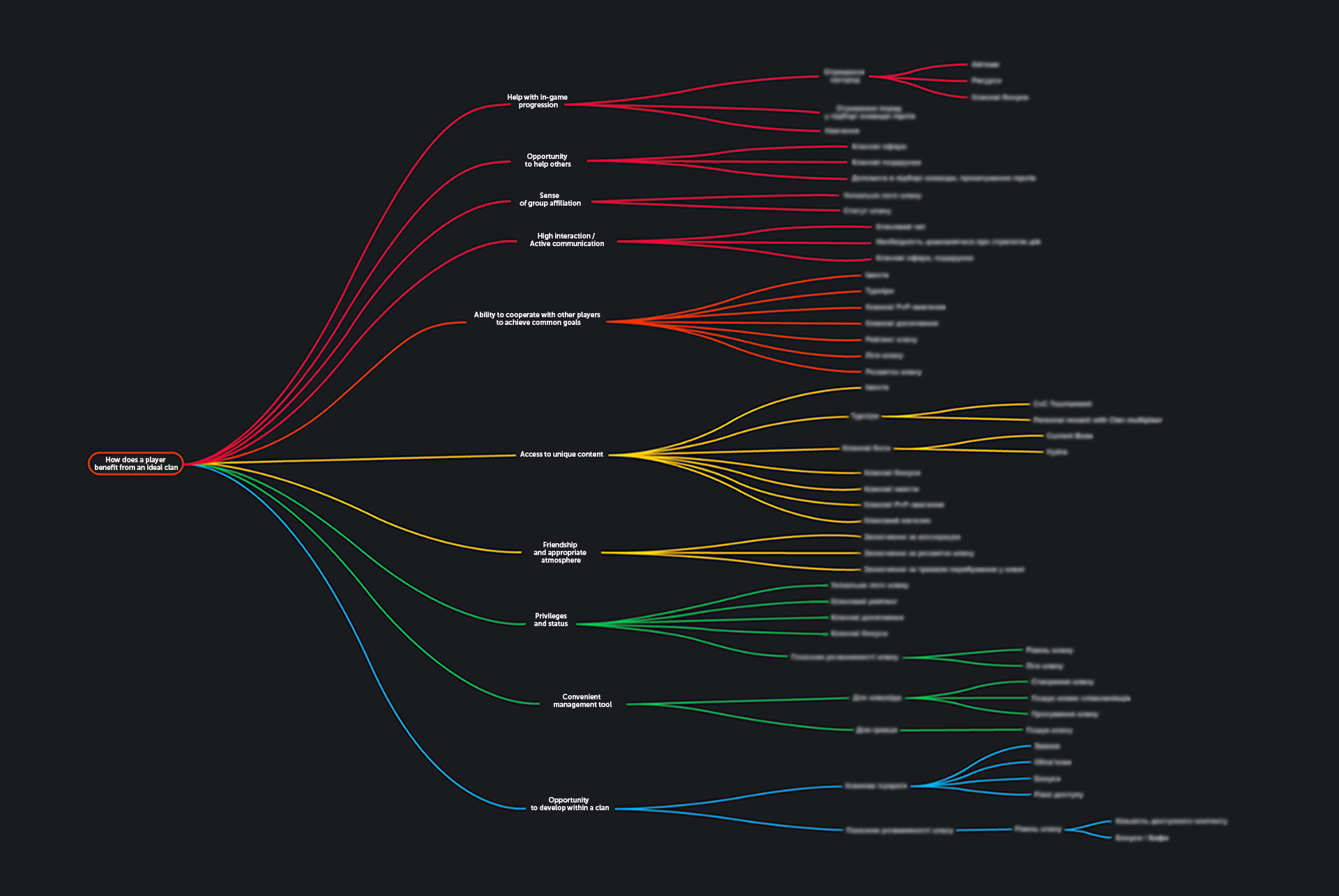
Let’s look closer using the several segments from the diagrams as examples. First, we answered the question of how a player would benefit from an ideal clan – then, we brainstormed methods and features to achieve this.
How does a player benefit from an ideal clan?
Ability to cooperate with other players to achieve common goals:
- Tournaments
- Clan competitions
- Clan achievements
- Clan ranking
- Clan leagues
- Clan development
Access to unique content:
- Tournaments: Clan vs Clan Tournament, personal rewards with clan multiplayer
- Clan Bosses
- Clan benefits
- Clan quests
- Clan PvP competitions
- Clan Shop
Privileges and status:
- Unique clan insignia
- Clan ranking
- Clan achievements
- Clan benefits
- Clan development indicators: clan level, clan league
Clan feature house and interrelation map
Having drawn up the diagram, we decided to create a symbolic house out of these features. We assumed what its foundation would be, what would be located on its business and residential floors, and what would form the roof. For example, the basic features – without which a clan cannot exist – were put as the foundation. The roof included features that were not as significant as others but still would be good additions for players.
In the clan feature house, green indicates features that already exist in the game. Yellow indicates features that already exist but need to be improved or are in the process of development. Red shows features which aren’t planned yet but we would like to develop in the future.
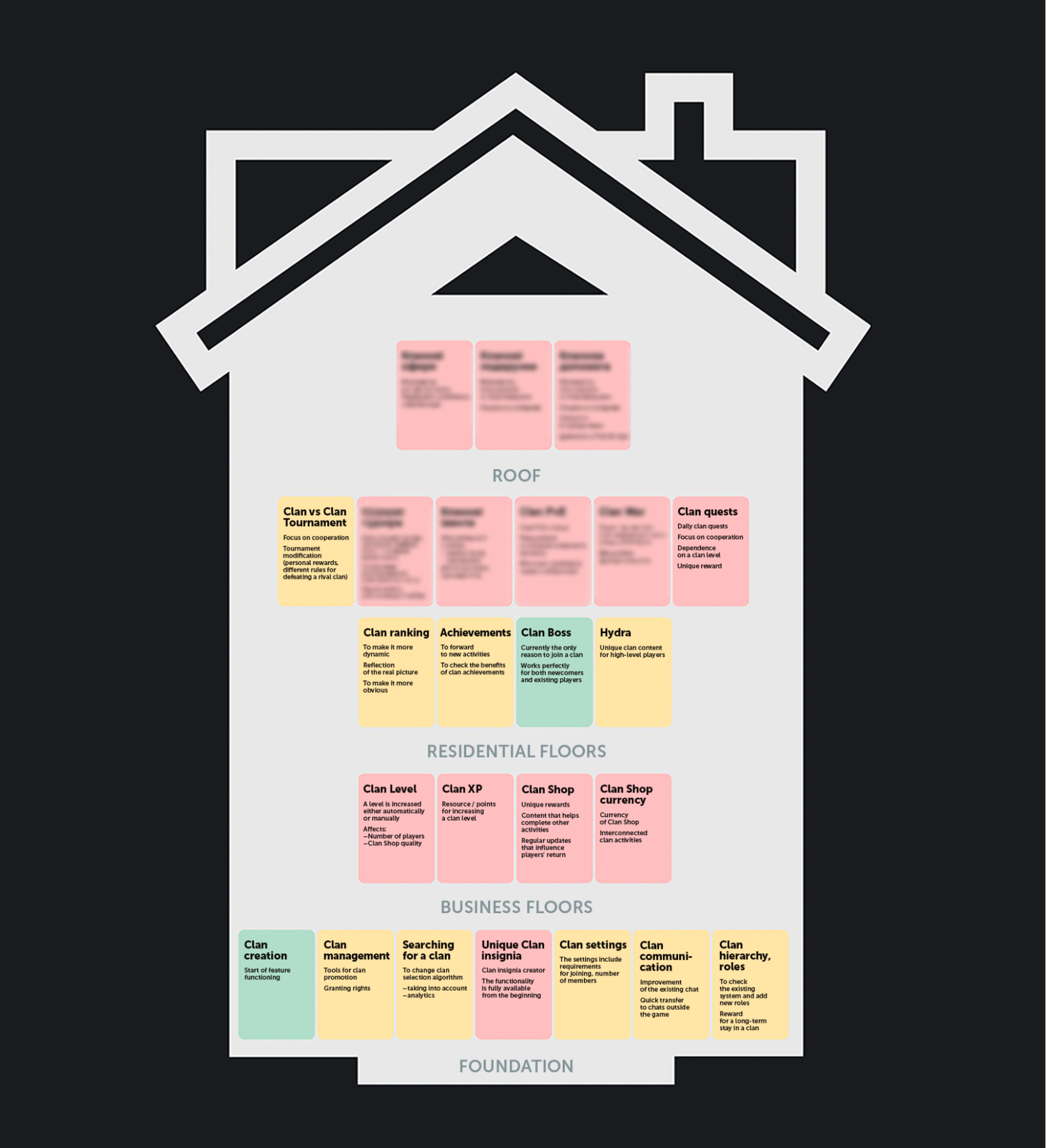
Here’s what the foundation looks like:

Most features are marked in yellow. This means that they exist in the game but we want to improve them.
All these features aim to foster a sense of group affiliation and promote player interaction. It is a convenient management tool that enables development within a clan and encourages players to stay in their clan for a long time.
Afterwards, we identified all the main features that we would definitely like to release in the future and created the following interrelation map:
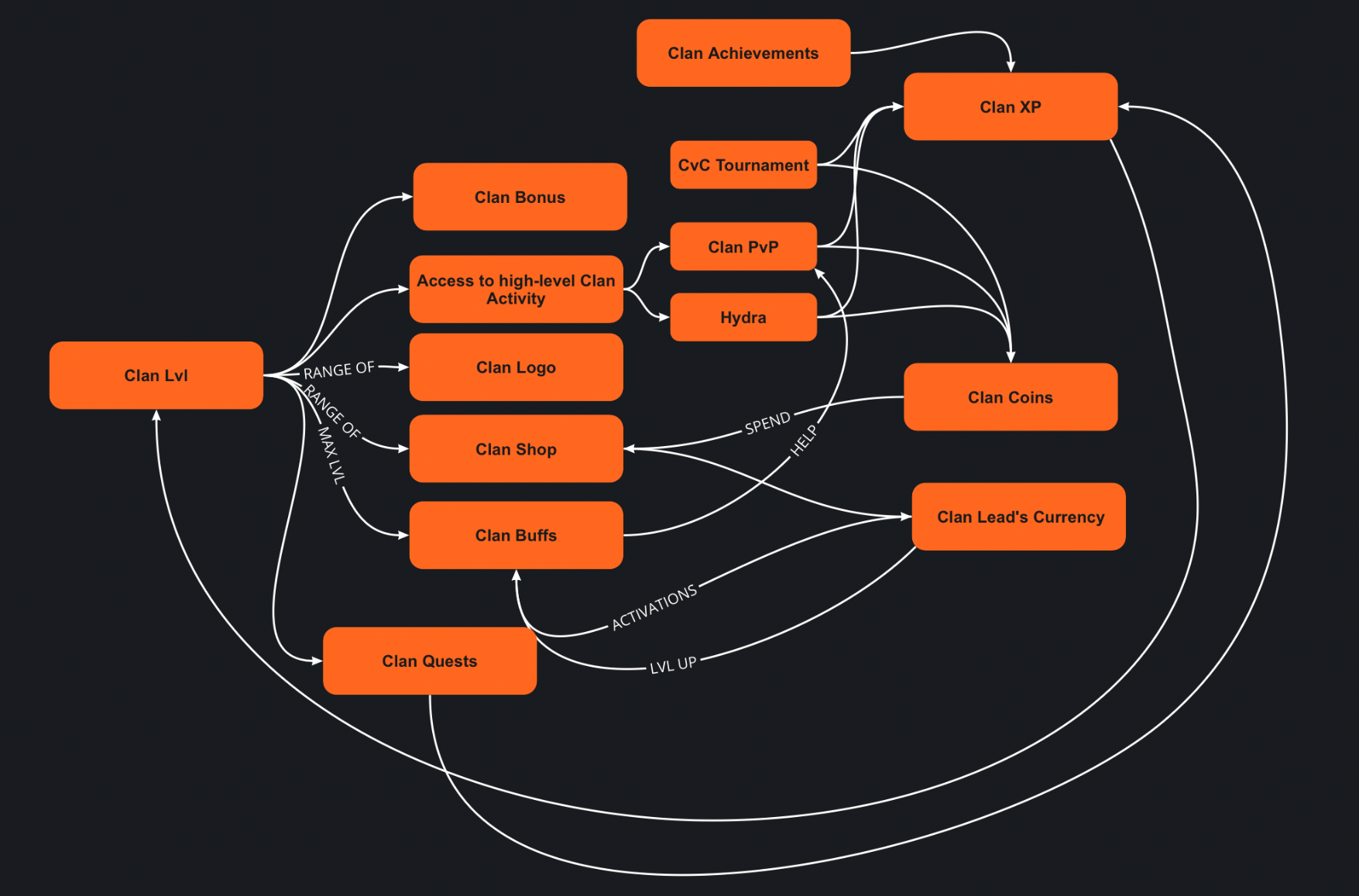
In this diagram, we showed how things are connected and how they influence each other. Before creating the map, we discussed everything with stakeholders. For example, we decided to add a clan level, which can be increased with clan XP. Players can get clan XP through events, tournaments, and quests.
We realized that we couldn’t release the Clan Shop separately from other clan features. We also needed to add the clan levels, quests, and everything related to the shop and clan development.
What we got out of this
First, we developed a precise clan development plan and prioritized the release of features.
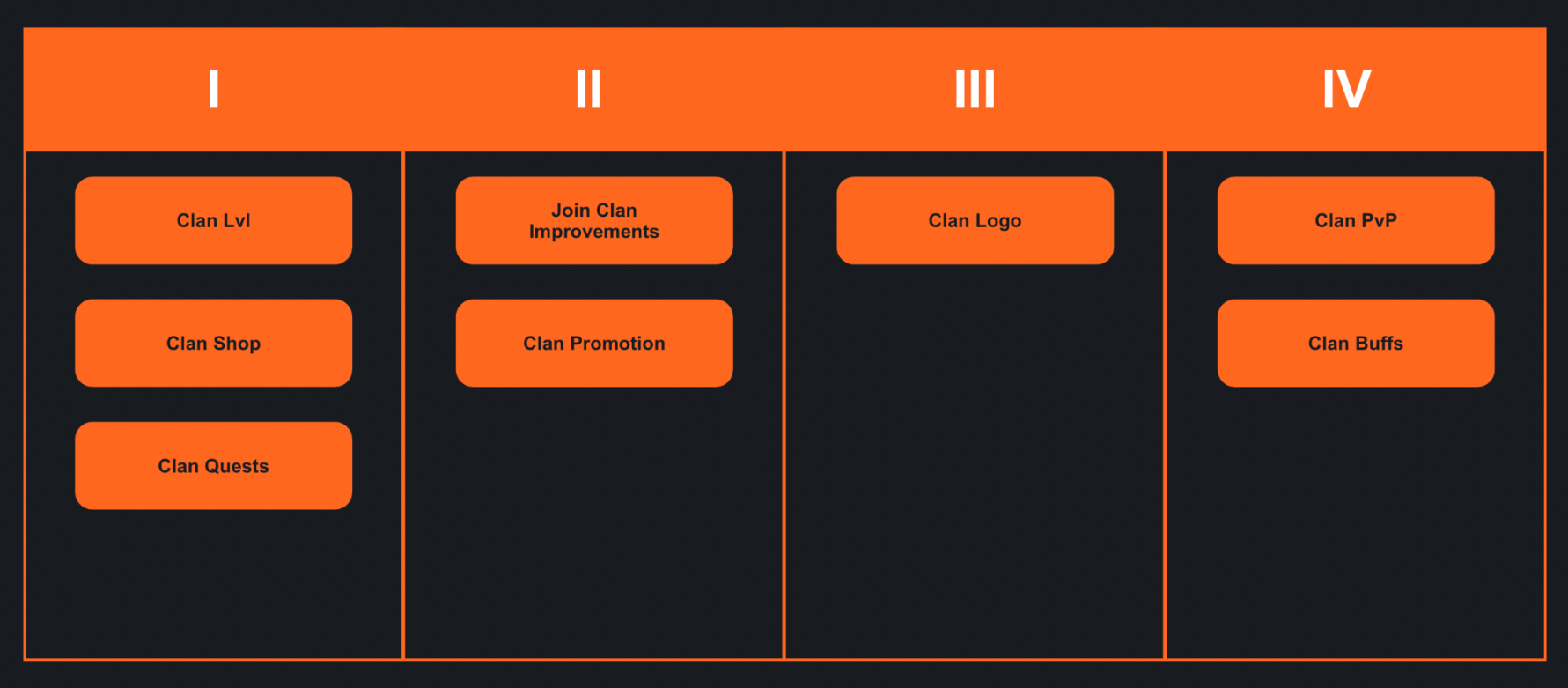
Feature release plan
We were able to reduce the time it took to approve certain features with stakeholders as we had already discussed their necessity at the planning stage.
We made the clan features interconnected and complementary to each other – we didn’t just add a shop, but also connected it to other functionalities.
You can see our progress by observing the changing the colors in the clan feature house:
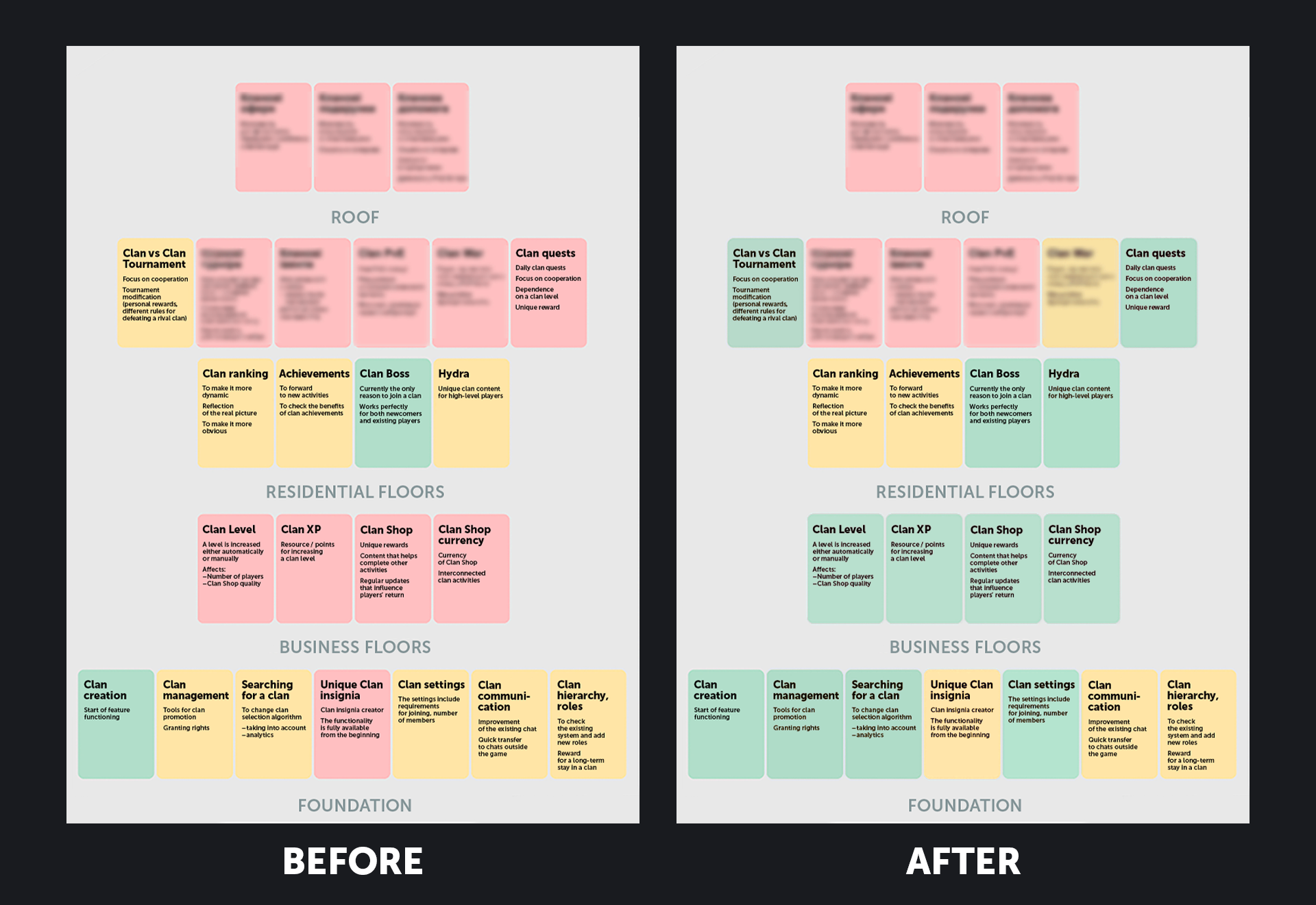
As you can see, many features became green and yellow – features that we have released or that are in the process of improvement. And we kept working.
What we didn’t consider
What’s part of the whole system for us is a separate concept for players
The system we implemented was initially confusing for players. For example, we calculated that it would take three years for average clans to reach the maximum clan level, with stronger clans needing less time to do this.
After release, our players calculated that it would take 10 years to reach the maximum clan level. This is because we hadn’t yet added clan XP to tournaments. To get it down to those three years we initially calculated, we needed to release some other improvements.
We should have communicated better with the community to avoid misunderstanding.
Ill-considered feature onboarding and opening
At one point, the following meme was popular in our community:
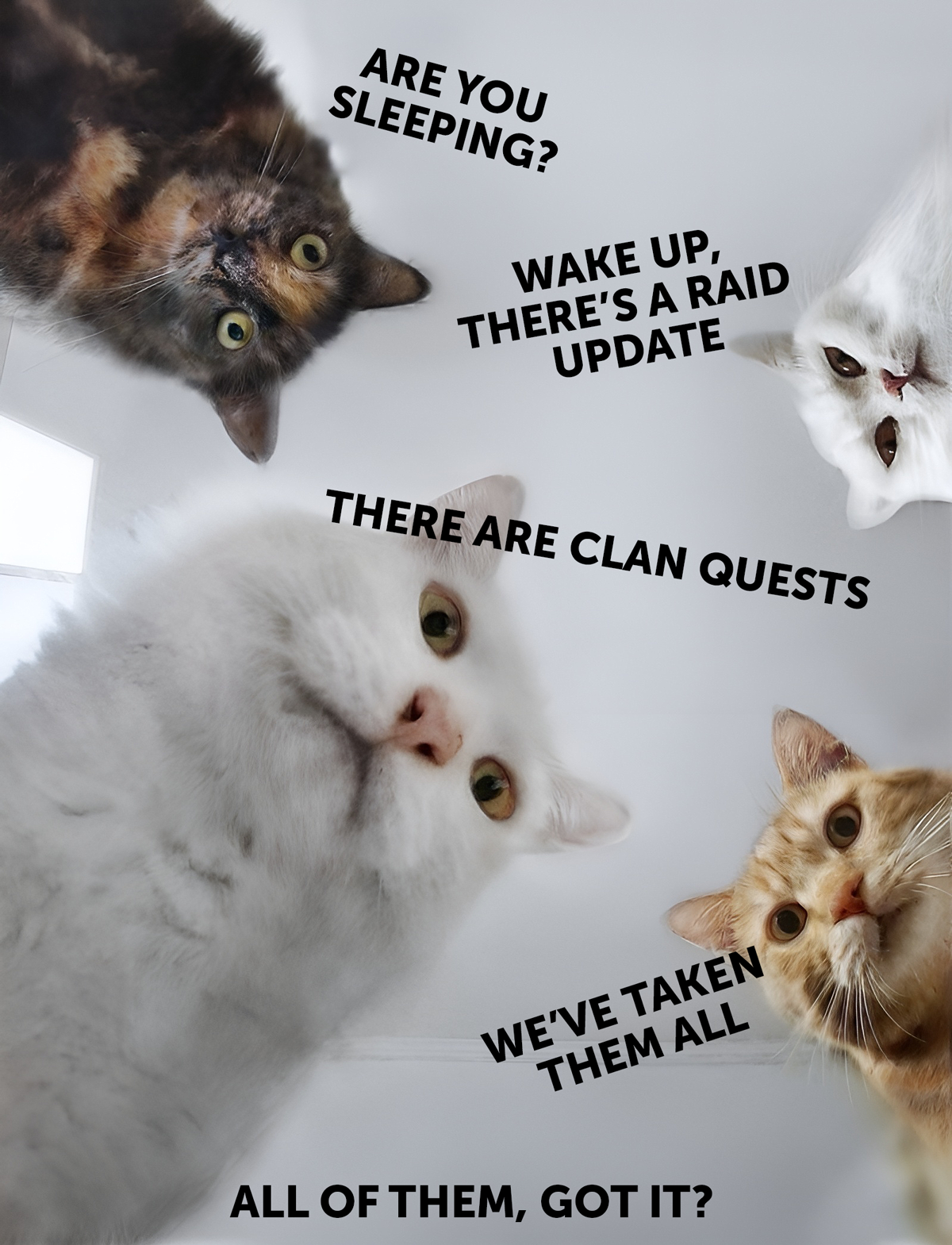
We wanted to encourage player cooperation and made the clan level affect the number of available quests. We thought it was logical: the higher the level, the more quests are available.
Players were looking forward to this feature – but when we released it, many of them couldn’t get a quest because all the available ones were already taken. Of course, we realized that there wouldn’t be enough quests for everyone at the beginning, but we expected players to cooperate, negotiate, share quests, and have an incentive to develop a clan in order to get more quests. However, we didn’t take into account that most players weren’t ready to cooperate with others. They didn’t like this decision, and this affected our rating in the store.
Simultaneous feature release and loyalty program rebalance
In our loyalty program, it was possible to get an in-game item – a Sacred Shard, with which players can summon a Legendary Champion – for logging into the game every day for a month. However, our analytics showed that, unfortunately, some important KPIs significantly dropped. Based on the analytics results, we decided to remove this Sacred Shard – and players were, of course, outraged by this decision.
Unfortunately, this affected our ratings in the store. We found it difficult to separate the ratings related to clan functionality from the ones related to rebalancing.
Our conclusions
- A systemic design should be used for major features. It is necessary to consider what order features will be released in up front. Such systematization and prioritization allows us to see an overall picture of what we’ll get at the end.
- Feature onboarding and launching should be thought out in detail. A good example of this in our game is players being able to craft artifacts using certain materials which they receive from Bosses. We give players a lot of materials at the beginning (e.g. enough for them to craft ten items) so they can check out this feature straight away.
- It is necessary to have a clear understanding of the plan for features’ promotion in the community. We provide our community and support teams with detailed information and develop a thorough strategy on how to communicate with players.
- Creating a feature checklist is useful to avoid repeating mistakes. After each major release, we hold a retrospective with the production team and add its results to the checklist so as not to forget anything in future.
- Major features shouldn’t be released simultaneously with other changes. In general, several major features should not be released at the same time as it makes it difficult to analyze KPIs later.
My main goal was to show our approach to working on large features step-by-step. If you have a small project, this principle may still be suitable for planning the development of the entire project or its separate parts.
